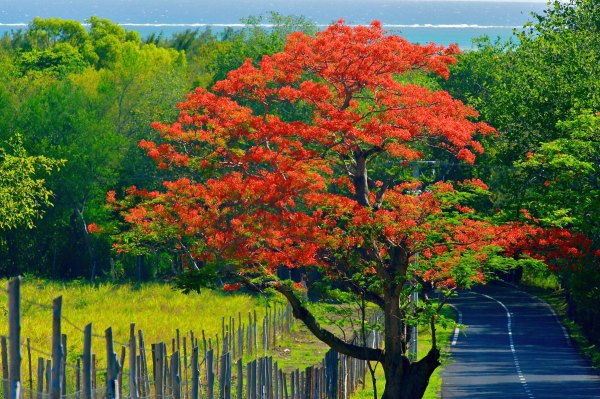Moving around in Mauritius & Rodrigues
Read moreMauritius, a small island nation located in the Indian Ocean, is known for its stunning beaches, turquoise waters, and rich cultural heritage. However, the island's road network is also worth noting. In recent years, Mauritius has invested heavily in improving its road infrastructure, which has resulted in smoother, safer, and more efficient travel for locals and tourists alike.
The road network in Mauritius spans over 2,000 kilometers, connecting the island's major cities, towns and villages. The island's main highways are the M1 and M2. These highways are well-maintained and have multiple lanes, making it easy to navigate through the island's busiest areas.
In addition to the highways, there are several other types of roads in Mauritius. The island's rural areas are connected by smaller, single-lane roads, which wind through picturesque villages where the resorts are situated. These roads may not be as well-maintained as the highways, but they offer a unique glimpse into the island's traditional way of life.
One of the most significant recent developments in Mauritius' road network is the construction of the Ebene Interchange. This massive project, which took several years to complete, involved the construction of a series of elevated highways, flyovers, and underpasses. The interchange has greatly reduced travel time between the island's busiest areas and has improved traffic flow on the island.
Another notable improvement to Mauritius' road infrastructure is the introduction of smart traffic management systems. These systems use real-time traffic data to optimize traffic flow and reduce congestion. The island's traffic lights are also synchronized to improve traffic flow during peak hours.
On the other hand, the tourism industry which is back to normal after Covid-19 restrictions, has led the government to enhance the roads so the tourists can move and access the villages easier to carry out the numerous stunning leisure activities the island has to offer.
Despite these improvements, road safety remains a significant concern in Mauritius. The island has a relatively high number of road accidents, and many of these accidents are attributed to reckless driving, speeding, and drunk driving. In recent years, the government has implemented several measures to improve road safety, such as increasing the number of traffic police and imposing stricter penalties for traffic violations.
One unique aspect of driving in Mauritius is the presence of roundabouts. Roundabouts are commonly used in many countries, but they are particularly prevalent in Mauritius. These circular junctions help to improve traffic flow, reduce congestion, and improve safety by eliminating the need for traffic lights.
One of the challenges of driving in Mauritius is the narrow roads, especially in the rural areas. Drivers must be cautious when driving on these roads, as they are often shared with pedestrians, cyclists, and farm animals. Additionally, some of the roads in the more remote parts of the island may be poorly maintained, making them more difficult to navigate.
Another challenge for drivers in Mauritius is the high volume of traffic during peak hours. The island's population has grown significantly in recent years, and this has resulted in increased traffic congestion, particularly in the cities. However, with the introduction of smart traffic management systems and the expansion of the island's road network, these issues are being addressed.
In conclusion, Mauritius' road network has come a long way in recent years, thanks to significant investment in road infrastructure. The island's highways, rural roads, and roundabouts make it easy to navigate through the island's diverse landscapes. However, road safety remains a significant concern, and drivers must exercise caution when driving on the island's narrow, winding roads. With ongoing efforts to improve road safety and manage traffic congestion, Mauritius' road network is poised to continue to develop in the years to come.


























































